‘Iconic: Black Panther’ Ties Then With Now
Touring exhibit features works by original members of the revolutionary group and other anti-establishment artists.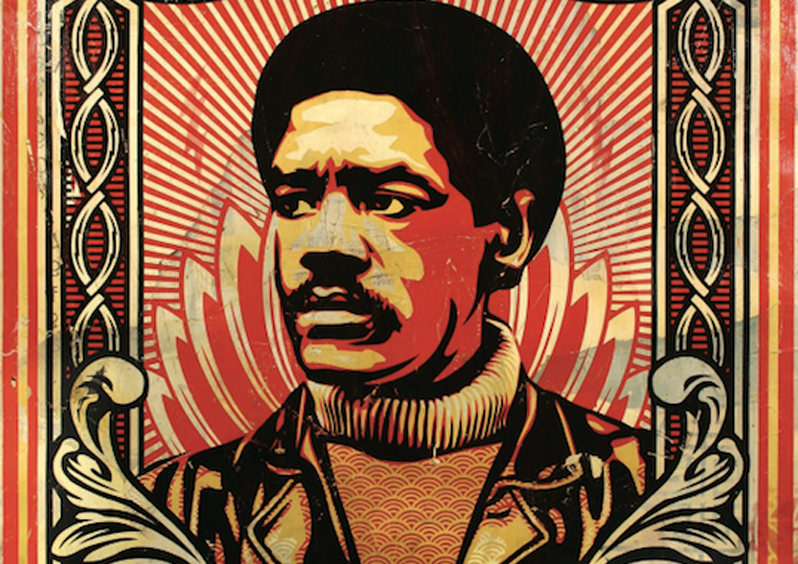
Artist Shepard Fairey’s portrait of Black Panther Party co-founder Bobby Seale, part of the “Iconic: Black Panther” exhibit in Los Angeles. (Shepard Fairey)
It could have been their swagger, or that they exercised their right to openly carry firearms as they policed the police in their Oakland, Calif., neighborhood. Or maybe it was their dissemination of Mao Zedong’s “Little Red Book” that led former FBI Director J. Edgar Hoover to call the Black Panther Party “the greatest threat to the internal security of the country.”
Today, their legacy continues to resonate in politics as well as pop culture. Reviled by the right, embraced by the left, emulated by rights groups, they are now being hailed by artists in “Iconic: Black Panther,” a multicity touring show featuring works by original Panthers, including Emory Douglas, as well as artists Robbie Conal, Shepard Fairey and dozens more at Gregorio Escalante Gallery in L.A.’s Chinatown. The exhibition opens Saturday and runs through May 14.
“You could feel the Panthers trying to be agents of change in the ’hood,” Conal told Truthdig about the years he spent in Oakland in the ’60s and ’70s. Known for his satirical portraits of political and social figures, his likeness of James Baldwin with the caption “I Am Not Your Negro” is part of the show. “Despite the lovely things they did in trying to educate the kids, and the food banks and the clothing banks and all that stuff, to accomplish anything positive inside the ’hood you have to have a gun. The Panthers knew that.”
Founded in 1966 by Huey Newton and Bobby Seale, the Panthers put forth a “Ten Point Program” addressing such community concerns as housing, education and health care, as well as police brutality, which required arming themselves.
“It’s one thing to pick up a loaded AK-47 or M16 inside the neighborhood. It’s another thing to pick it up and walk around with it outside,” observes Conal. “It might as well be a shovel to dig your own grave.”
In 1968, 17-year-old Bobby Hutton learned that lesson the hard way after a shootout with the Oakland Police Department. Upon surrendering, he stripped down to his underwear to prove he was unarmed. The police shot him anyway, at least 12 times.
“Oppressed people live in a constant state of violence being perpetrated against them. If we react, they turn around and accuse us of being violent,” Hank Jones, an original member of the Oakland chapter of the Panthers, told Truthdig. “It’s the psychological, low-level warfare that’s waged against us. Those are the things that trigger the other reactions, the physical reactions to violence.”
Jones is one of the “San Francisco 8.” In 2007, at the age of 71, he was arrested with Herman Bell, Jalil Muntaqim, Richard Brown, Richard O’Neal, Ray Boudreaux, Harold Taylor and Francisco Torres for the 1971 murder of San Francisco Police Department Sgt. John Young. With no means of paying the $3 million bail, Jones spent nine months in jail until the court finally decided the evidence against him, acquired through the torture of Taylor and two fellow Panthers in 1973, was inadmissible. “My family suffered, people lost jobs, homes, stuff like that. There are consequences,” he laments.
At the time, Jones and others had been giving lectures on the FBI’s COINTELPRO operation, a covert and often illegal program to infiltrate and disrupt political entities deemed unfriendly. Jones figures his arrest was the result of heightened security and paranoia associated with the Iraq and Afghanistan wars.
“They preemptively tried to prevent a repeat of the ’60s and ’70s by contacting former activists and different organizations, among them the Black Panther Party, the Weather Underground, [Students for a Democratic Society], animal rights people,” he recalls about his arrest. “So they came to my home and wanted to question me about my associations, my activities.”
While New Black Panther Party leader Quannel X agrees with President Trump that African-American voters gained little by supporting Democrats, Jones sees the president as a useful tool for motivating young protesters. “It’s not going to happen overnight. It’s what I try to tell the millennials: This takes time,” he said after sitting in on teach-ins conducted by local college students where he lives in Altadena, Calif. “Progress—you can’t stand in the way of it. You can’t block it forever. Back in the day, we had a saying: ‘Move on over, or I’ll move on over you.’ And I think that’s what’s happening today.”
Conal has been an anti-war protester since early adulthood. At the age of 73, he continues to view the establishment with skepticism. His recent work, “Bully Culprit,” is an unflattering portrait of Trump, which will be followed by a new painting—a sequel of sorts—entitled “Hammer and Pickle,” featuring the president wearing a Russian military hat with the hammer and sickle emblem.
“I think Trump has a done a lot for the consciousness of the youth of America. Trump and Bernie together—maybe we’ll get somewhere,” he says, reaching for optimism. “I’ve never seen so many artists address social and political issues in their work as they are now. It’s amazing. It pleases me. I’m thrilled!”
Independent journalism is under threat and overshadowed by heavily funded mainstream media.
You can help level the playing field. Become a member.
Your tax-deductible contribution keeps us digging beneath the headlines to give you thought-provoking, investigative reporting and analysis that unearths what's really happening- without compromise.
Give today to support our courageous, independent journalists.
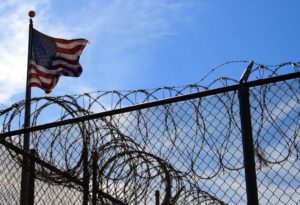
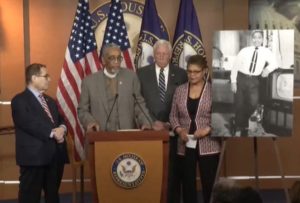
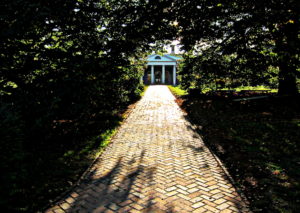
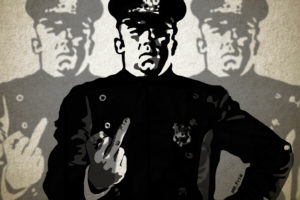
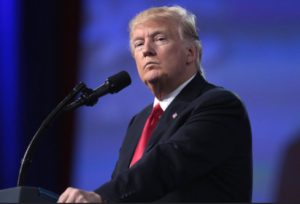
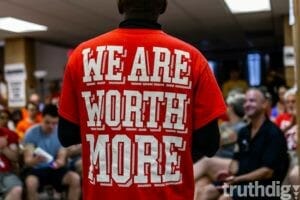
You need to be a supporter to comment.
There are currently no responses to this article.
Be the first to respond.